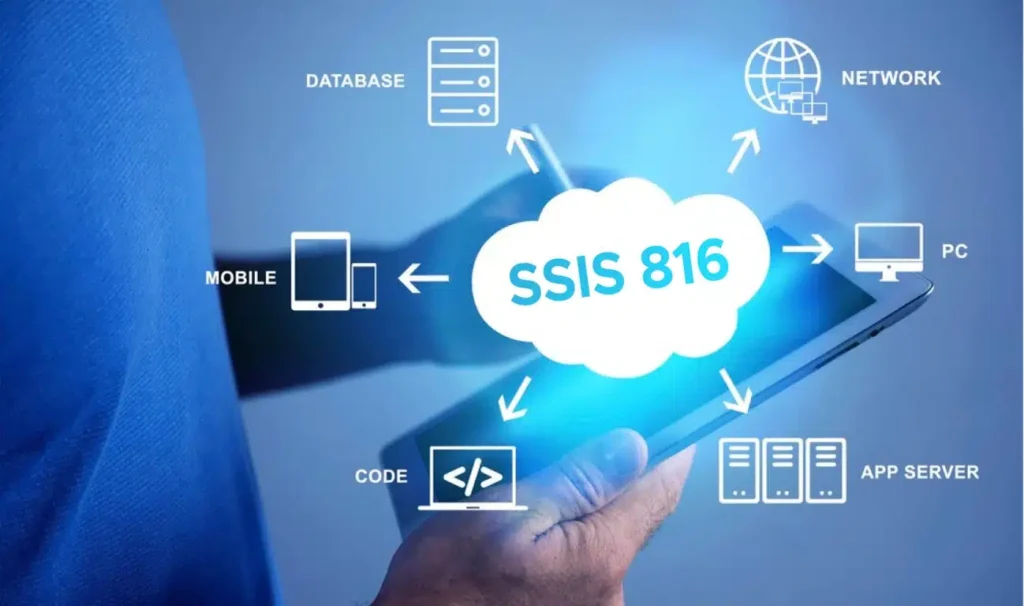In today’s world of big data, seamless data integration has become a critical component for business intelligence and decision-making. Microsoft’s SQL Server Integration Services (SSIS) is a popular ETL (Extract, Transform, Load) tool designed to automate and streamline these processes. One of its standout versions, SSIS 816, has gained attention for its robust performance, scalability, and enhanced capabilities. In this article, we’ll explore what SSIS 816 is, its key features, advantages, and how businesses can benefit from it.
What is SSIS 816?
SSIS 816 refers to a particular build or version of SQL Server Integration Services that is tailored for handling large-scale data transformations. Though Microsoft hasn’t officially labeled a version as “SSIS 816” publicly, the term is commonly used in internal builds, beta releases, or preview versions of the SSIS framework. It’s believed to be part of SQL Server 2016 or later, including components optimized for performance and cloud integration.
This version is known for its improved data flow performance, better debugging tools, and tighter integration with Azure cloud services. It is suitable for enterprises dealing with high-volume data and looking for stability and speed in their ETL pipelines.
Why SSIS Still Matters in a Cloud-Driven Era
While many companies are moving towards cloud-native solutions, SSIS remains a powerful tool in hybrid and on-premises environments. It allows developers to create complex workflows using a visual interface, making it easier to manage data flows between various sources and destinations.
SSIS 816 enhances this traditional power by enabling better performance and offering cloud-friendly features. For companies with existing SQL Server infrastructure, this version provides a cost-effective way to scale up without completely overhauling the system.
Key Features of SSIS 816
1. High-Performance Data Flow Engine
One of the highlights of SSIS 816 is its enhanced data flow engine, which processes millions of records with improved speed and accuracy. Parallel execution and memory optimization help minimize resource consumption while maximizing throughput.
2. Advanced Logging and Debugging
Developers often struggle with tracking down issues in large-scale ETL operations. SSIS 816 introduces refined logging capabilities and breakpoint features, making debugging much more efficient. Logging is also customizable, allowing users to track only the events that matter.
3. Integration with Azure Data Services
With more companies moving towards hybrid environments, the Azure compatibility in SSIS 816 is a big plus. It supports direct integration with Azure Blob Storage, Data Lake, and Azure SQL Database, simplifying the shift from on-premises to cloud infrastructure.
4. Improved Package Deployment
SSIS 816 includes a more flexible deployment model. Developers can deploy packages to the SSIS Catalog with better version control and rollback options. The deployment wizard is intuitive and supports multiple environments with ease.
Use Cases for SSIS 816
SSIS 816 is particularly useful in scenarios that require processing large amounts of data on a regular basis. Here are some common use cases:
-
Data Warehousing: Transforming raw data into structured formats suitable for business intelligence.
-
Cloud Migration: Moving data from local servers to cloud storage using secure pipelines.
-
Data Cleansing: Identifying and correcting errors in large datasets.
-
E-commerce Analytics: Integrating customer data from multiple sources for personalized marketing.
Advantages of SSIS 816 Over Previous Versions
Compared to its predecessors, SSIS 816 offers a noticeable boost in both performance and flexibility. Here are a few benefits that set it apart:
-
Better scalability for enterprise-level data processing.
-
Enhanced debugging tools that save developer time.
-
Support for cloud-native services, easing hybrid deployment.
-
Increased reliability in package execution and scheduling.
SSIS 816 makes it possible to process data faster, troubleshoot easier, and connect more efficiently to modern cloud systems.
Challenges and Considerations
Despite its many benefits, SSIS 816 is not without challenges. The learning curve for new users can be steep, especially for those unfamiliar with Microsoft SQL Server tools. Additionally, managing SSIS in a hybrid environment may require configuring firewalls, VPNs, and secure access policies.
Another consideration is licensing. Enterprises using SSIS 816 as part of SQL Server may incur additional costs, particularly if integrating with premium cloud services. Therefore, a cost-benefit analysis is crucial before making the switch.
Best Practices for Using SSIS 816
To maximize the capabilities of SSIS 816, consider the following best practices:
-
Use incremental loads instead of full loads to save time and resources.
-
Modularize packages for better maintenance and reusability.
-
Leverage logging to monitor performance and catch issues early.
-
Test in a staging environment before deploying to production.
-
Utilize SSIS parameters to manage configurations across environments.
Adopting these practices will help ensure that your ETL processes are not only fast but also resilient and maintainable.
The Future of SSIS and SSIS 816
Microsoft continues to support and evolve SSIS alongside its newer cloud-native tools like Azure Data Factory. While some organizations are transitioning to fully cloud-based architectures, SSIS 816 offers a practical bridge between legacy systems and modern data ecosystems.
SSIS 816 is particularly valuable in hybrid environments where both on-prem and cloud data need to be synchronized and analyzed. As more features are added and cloud support improves, it remains a reliable choice for enterprises managing large data workloads.
Conclusion
SSIS 816 stands out as a powerful version of SQL Server Integration Services, offering enhanced performance, better cloud integration, and advanced debugging tools. Whether you’re modernizing your existing ETL processes or planning a hybrid cloud strategy, SSIS 816 provides the flexibility and power needed for today’s data challenges.
By understanding its features, advantages, and best practices, businesses can unlock the full potential of their data pipelines with SSIS 816 — ensuring reliable, scalable, and efficient data integration for years to come.


